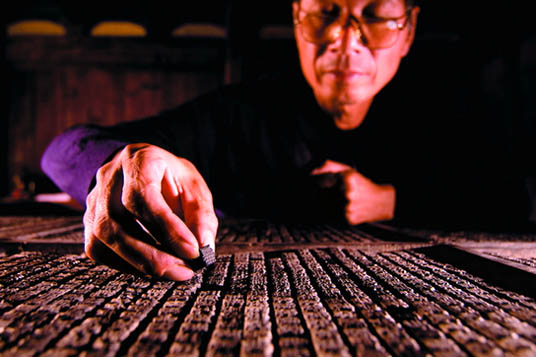Ninth Chinese National Ancient Characters and Representative Assembly held in Beijing
Protecting and Cataloguing Chinese ethnic minority writing and ancient texts

Substantial difficulties in cataloguing ancient minority texts
The Ninth Chinese Ancient Ethnic Writing Seminar was held at Minzu University of China in Beijing from December 1st to 2nd. Seminar attendees expressed their enthusiasm for cataloguing and protecting ancient minority writing forms and texts. They mentioned that their task has become a national undertaking, and embraced an unprecedented opportunity for development.
Substantial difficulties in cataloguing ancient minority texts
In the course of development for written scripts in ancient China, more than thirty different variations of characters were employed by minority ethnic groups. This multiplicity of written scripts formed the backbone of an extensive collection of ancient texts with rich and diverse content. This breadth of written works was crucial in the cultural development of China and forms a glorious chapter in China’s cultural history.
Nevertheless, current efforts to catalogue and preserve ancient writing systems and texts must overcome tremendous difficulties. Shi Jinbo, deputy director of the Committee of Experts of National Ancient Books Preservation and a member of the Chinese Academy of Social Sciences, detailed the five most significant obstacles facing protection and preservation efforts: lack of clarity regarding the total number of texts; substantial wear and damage to ancient texts, a dearth of experts in the field, inconsistent and disperse preservation of ancient texts in different locales, and substantial losses overseas. He also noted that cataloguing ancient texts is difficult because there are no standards for distinguishing between rare versus common ancient books or learning from different editions of the same book, while the large number and diversity of languages, difficulty in determining age, and confusion arising from variety of shapes and forms of texts further contribute to the challenge.
Nie Hongyin, director of the Department of Palaeography in the Institute of Ethnology and Anthropology at the Chinese Academy of Social Sciences, explained that the unregulated and chaotic development of an antique and artifact retail business in China has led to counterfeits, making it hard for researchers to distinguish between authentic and false samples of minority writing and texts.
A national standard for protection of ethnic minorities’ ancient texts
The foremost topic of the assembly was increasing government involvement and oversight in cataloguing and protecting ancient minority texts in China. In 1997, the State Ethnic Affairs Commission initiated a still-ongoing project to compile a comprehensive table of contents of ancient classics, complete with abstracts. The project has made notable achievements during the past ten years; Nie Hongyin noted that 19 minority groups have already finished compiling their ancient classics, such as the Naxi minority. When it is complete, the project will encompass more than 60 volumes and 110 individual books.
At the beginning of 2007, Opinions of the General Office of the State Council on Further Strengthening the Protection of Ancient Books explicitly pointed to the importance of preserving minority written scripts and ancient texts. Directory of National Precious Ancient Books, which was published annually between 2008 and 2010, includes 618 books written in 14 different types of ethnic writing systems. Huang Runhua, a member of the Committee of Experts of National Ancient Books Preservation and a research librarian at the National Library, elaborated that the 14 minority scripts include Yanqi-Qiuci script, Khotan script, Tibetan script, Uighur script, Tangut script, Mongolian script, Chagatai Khan script, Bai script, Yi script, Manchu script, Nakhi Dongba script, Dai script, Shui script, and ancient Zhuang script, as well as combinations of these languages.
Huang Runhua said that in recent years, China has initiated specific projects to protect ancient classics in Xinjiang and Tibet. In 2010 and 2011, the “Xinjiang Historical Documents and Ancient Classics Protection Work Achievement Exhibition” was held in Ürümqi and Beijing respectively, which reflects the importance of Xinjiang’s culture within Chinese culture. The ongoing “Reconstruction of Rare Books in China Project” contains more than 30 kinds of famous and precious minority scripts and ancient classics. Moreover, Classification Criteria for Chinese Ethnic Minority Scripts and Ancient Texts, edited by the Cultural Palace of Nationalities, will help facilitate the institutional and legal development of Chinese minority scripts and ancient texts protection endeavors.
Nie Hongyin praised the Chinese government, observing that it has already taken actions to protect ancient classics; noted that this provides an unprecedented opportunity for cataloguing and protecting the ancient writing systems and texts of Chinese ethnic minorities.
The Chinese version appeared in Chinese Social Sciences Today, No.387, Dec.3, 2012
(Translated by Zhang Mengying)
